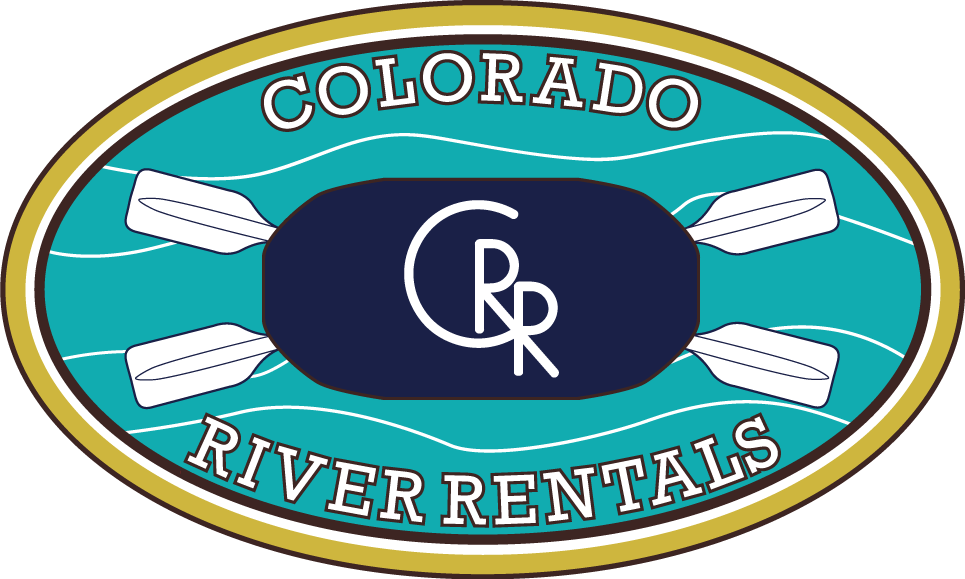Terms to Help you Sound like a Pro on the River
When going on a river trip for your first time, you will find yourself learning so many terms, it may hard to remember them all on the spot. Here are some river terms from Colorado River Rentals to start familiarize yourself with before you head out on the river.
-
Eddies:
Eddies are a river feature that forms just downstream of an obstruction. An eddie can form on the side of a river or immediately after a boulder in a river. The water in an eddie is flowing in the opposite direction from the rest of the river and can at times be swirling and violent. Eddies can also be a safe place to pull over on the river and rest or let the rest of your group catch up.
-
Flow:
The flow of the river is the current volume of the river. In the United States, river volumes are measured in cubic feet per second. A great website to check river flows in Colorado is Mountain Buzz.
-
High Water:
High water varies for each river. Typically, the highest water in Colorado comes from large accumulations of snow melt. High water can make rapids much more extreme but also a lot more fun.
-
Low Water:
As is the case with high water, low water does not always mean easier rapids. Sometimes rapids become easier with lower water and sometimes they become more difficult.
-
Rapid:
Rapids are fun and exciting sections of the river where altitude changes and rocks in the water create challenging roller coaster rides in the river. Rapids are part of what makes river running the greatest activity available but can also be dangerous when the river is not read appropriately. Usually rapids come in short spurs and can present a wide variety of difficulty and challenge for rafts to negotiate.
-
Rapid Classifications:
Rapids are classified on a scale of 1-6 and may change with water levels.
Class 1 rapids are basically moving flatwater with no obstructions. Be careful at low water to not bottom out!
Class 2 rapids have smaller waves and clear channels to navigate through.
Class 3 rapids start to get a little more technical with irregular waves and navigational challenges such as rocks in the water.
Class 4 rapids are turbulent with strong waves and navigational challenges. Make sure to read the river appropriately– there may be a rock halfway through that needs to be avoided or a canyon wall to back away from.
Class 5 rapids are similar to class 4 rapids but tend to be longer with very turbulent waves coming from different directions in the water. Know the river and your skills before you set up to run a class 5! Rescue conditions may be difficult in these areas.
Class 6 rapids are defined as runs that have almost never been attempted and often exemplify the extremes of difficulty, unpredictability and danger. The consequences of errors are very severe and rescue may be impossible. Class 6 are for teams of experts only, at favorable water levels, after close personal inspection while taking all precautions.
-
River Left and River Right:
These are the terms we use to distinguish points of interest either in the river or on the river bank. When a river runner specifies a side of the river, whether it be river right or river left, they are always referring to the side of the river in regards to facing downstream.
-
Take Out:
This is the term used to describe the finishing point of any rafting trip where cars are parked and the boats can be unloaded.
-
High Side:
This is a command seldom used on rafting trips, however, when performed correctly, it can help to keep the boat upright and everyone in the boat. This command is used just before collisions with rocks and other obstructions such as large waves or holes. Basically it means, get to the highest side of the boat as soon as possible! Performing a high side can help shift the weight on a boat and help the boat not to flip over.
-
Strainers or Sifts:
Strainers are formed when an object blocks the passage of larger objects but allows the flow of water to continue. These objects can be very dangerous, because the force of the water will pin an object or body against the strainer and then pile up, pushing it down under water. For a person caught in this position, it will be difficult or impossible to get to safety, often leading to a fatal outcome. Never point a person who has fallen into the water toward a strainer, always point people to safety in the water.
-
The “W”:
The “W” refers to a word you don’t want to say on the river, wind. Wind can be your worst enemy if it is blowing upstream and you are in a section of flatwater. Upstream W usually worsens in the afternoon, so plan your trips for the mornings and don’t jinx yourself!
Get Gear

